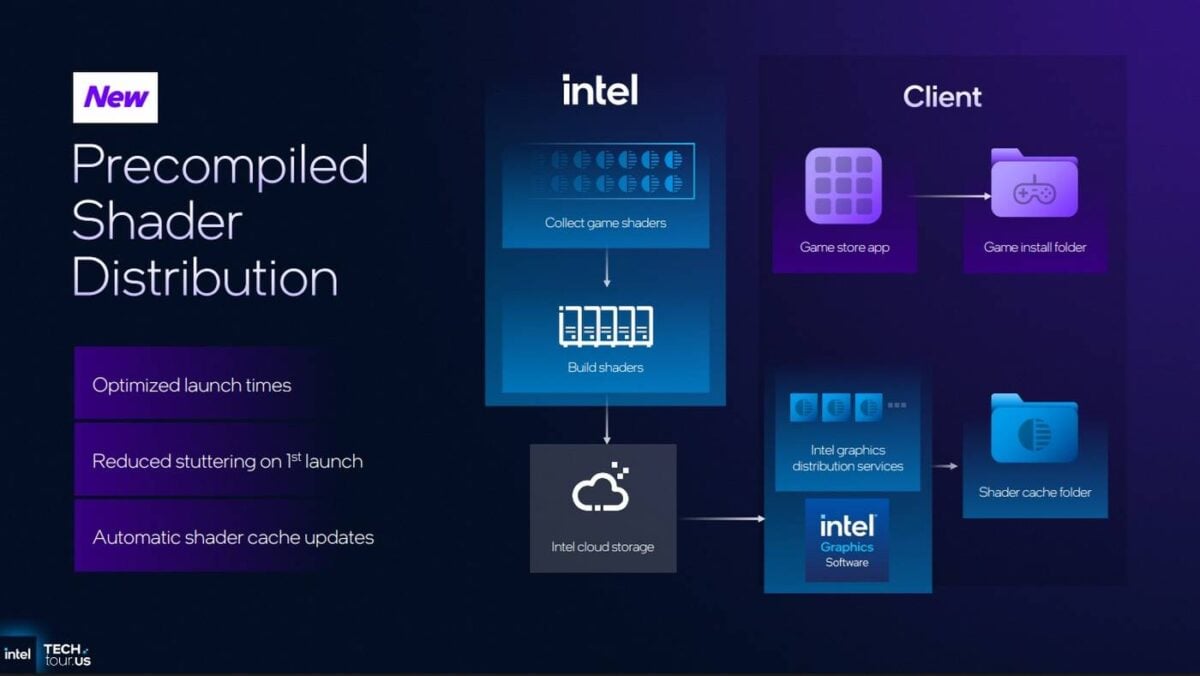Intel has unveiled its solution to tackle one of gamers’ arch enemies – shader stuttering. The brand aims to distribute ready-to-use shaders through its driver suite, freeing users’ systems from this problematic task. In a way, this is similar to how consoles work, as they avoid gameplay stutter and long initial load times by providing pre-compiled shaders with each game.
Not to be confused with traversal stutter, shader stuttering happens when a game needs to compile a shader for the first time while you are playing. It occurs generally when new effects, materials, or lighting appear, prompting the GPU driver to compile the corresponding shader. While this takes only a few milliseconds, it causes a sudden interruption in frame delivery, which we perceive as a stutter or hitch. The Callisto Protocol is a prime example of this issue, turning a nice game into a messy experience.
Shader stuttering is especially annoying during the first minutes of gameplay following a game installation or driver update, as the shaders compile for their first time. While not specific to a game engine in particular, Unreal Engine 4 and 5 games have often been linked to this issue. Some devs have tried to circumvent the issue by adding a shader compilation step at the game’s launch menu, but the procedure can take a long time depending on each system’s performance. Some of the absurdly long ones include Star Wars Jedi: Survivor’s 15 to 30 minutes, and The Last of Us Part I’s up to 50 minutes (before the patch). A time that could be used to enjoy the game.

Intel plans to fix this by compiling shaders in the cloud before distributing them to gamers through its driver software. These will be saved in a local cache folder that can be accessed by games to retrieve the required shader instead of rebuilding it from scratch. Intel claims that the process will be automatic, hinting at some sort of game-detection system that downloads shaders for installed games.
Note, however, that Intel isn’t the only one tackling this problem; Microsoft is also working on a similar solution for its ROG Xbox Ally and ROG Xbox Ally X. Steam also has a somewhat similar system, which downloads precompiled shader caches for supported OpenGL and Vulkan titles.
That said, Intel’s approach is more universal, as long as you opt for one of its Arc GPUs. You can expect AMD and Nvidia to follow suit with their own take, but Intel has a time advantage due to fewer GPU models. If and when AMD and Nvidia decide to do the same, they will have to cover dozens and dozens of different GPUs, unlike Intel.
Now the question is, will all games be supported? And how long will it take Intel to release pre-compiled shaders for new games? I would guess, any game that gets day-one driver support will get this treatment too, but how about smaller titles that don’t get that kind of attention? Regardless, the lucky ones enjoying shader precompiling should offer a greater experience, allowing users to enjoy their games straight away instead of waiting for a loading bar to fill up.


